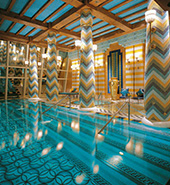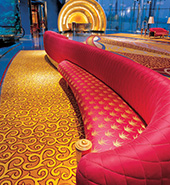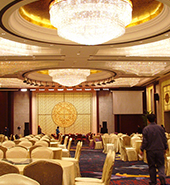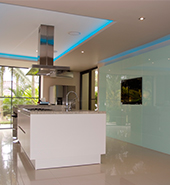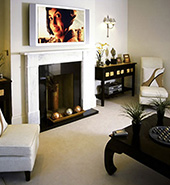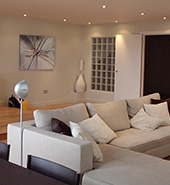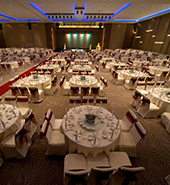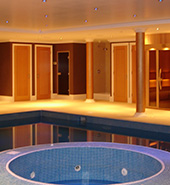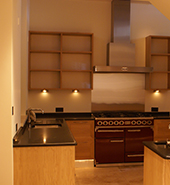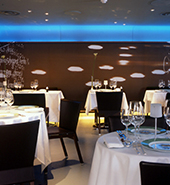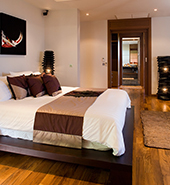LED lamps: What you need to know NOW!
LED lamps offer many potential benefits such as energy savings, long life, and new illumination options, but dimming them is not always straight-forward...
Choose dimmable LEDs
There is a misconception that all LED lamps can be dimmed with an LED dimmer - not true! Only an LED lamp that’s designed to be dimmable can actually be dimmed. It is essential to choose lamps that are marked as dimmable on the packaging. However, be aware that even that is not a guarantee of good dimming performance. The lack of an industry standard for dimmable LED drivers means that some will work much better than others. In particular, smooth dimming, the cut-off point, and stability of output are the features most likely to disappoint with lower priced OEM lamps.
Choose a dimmer made for LEDs
It’s important to choose a dimmer that’s designed for LEDs. Standard dimmers may be underloaded in many LED applications which can reasult in flickering, strobing and a limited dimming range. Dedicated LED dimmers are designed to exploit an LED lamps full dimming potential and better replicate the dimming behaviour of an incandescent lamp.
The power consumption of an LED is not constant. There will be in-rush currents and pulse currents, additionally most LEDs have a low power factor 0.88-0.50. To prevent tripping and dimming issues make sure to de-rate the dimmer by at least 30% from its maximum rated level. If using a multi-channel dimmer split the load across multiple circuits and gain greater control using ‘Scene Setting’.
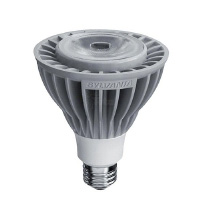
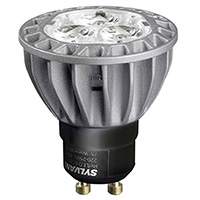
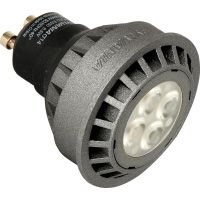
The increasing brightness of modern LED lamps has made dimming that much more important
Choose your lamps to match the dimmer
Some lamp manufacturers now include an automatic minimum brightness level. That is a point at which the lamp turns ON at ramp-up of the dimming curve, and correspondingly turns OFF again at the minimum ramp-down point. This ensures that any instability a lamp might exhibit at its lowest level of illumination can be avoided.
Most dimmer manufacturers will list recommended LEDs on their websites that they have tested. LEDs are tested for compatibility, range and the minimum as well as maximum number of lamps per channel that work well with their dimmers. Consult the dimmer manufacturer if an LED brand is not listed. You can ask them if they have a free testing service.
Choose recognised brands
When LED lamps, described as “dimmable” are tested, there is a notable difference in performance between quality brands and economy brands. The most likely areas to disappoint are the lower dimming range and the lamps stability. It is important to buy a reputable brand and preferably one recommended by the dimmer manufacturer. Choose lamps from established LED lighting manufacturers because separate from dimming and compatibility issues, well known brands are more likely to last longer and provide the customer with better support.
Consider dim to warm lamps
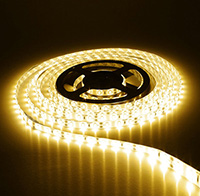 Now you can buy LED lamps, and recessed LEDs that change tone and become warmer as they are dimmed, thus mimicking filament lamps. Traditionally LEDs do not change colour when dimmed they just become less bright, but still retain the same colour appearance. With traditional tungsten or halogen lamps the colour changes through yellow to a warm orange as the filament dims. This produces a more natural softer light, similar to evening sunlight. Research has indicated that this is better for health, especially at night time, than the blue light emmitted from LEDs.
Now you can buy LED lamps, and recessed LEDs that change tone and become warmer as they are dimmed, thus mimicking filament lamps. Traditionally LEDs do not change colour when dimmed they just become less bright, but still retain the same colour appearance. With traditional tungsten or halogen lamps the colour changes through yellow to a warm orange as the filament dims. This produces a more natural softer light, similar to evening sunlight. Research has indicated that this is better for health, especially at night time, than the blue light emmitted from LEDs.

Choose a smart dimmer
Check to see that the LED lamp is dimmable and choose the brightest lamp that you are likely to need. As LEDs become more efficient, and hence brighter, dimming becomes more important. A dimmer will allow for the lamps to be used over a greater range of brightness and for a wider range of tasks. Dimmers with Scene-Setting and programmable by remote control - like the Futronix P100, P400 & P800 - are a great way to take advantage of LEDs, and give more flexibility and creativity to your lighting.
Check the brightness and the 90-degree cone
The European DIM2 regulation says that an LED GU10 spot light must emit more than 345 lm in a 90-degree cone. The total lumen output, including light that falls outside this cone, may be higher. The problem is that some lamps don't state if the lumen output quoted is the total emitted or inside the 90-degree cone area. Some manufacturers refer to the 90-degree cone, while others talk about usable lumens. Until manufacturers agree on a standard way to describe the lumen output some confusion will remain. Before you buy LED lamps, check that the beam is suitable for your application. Some have coloured or tinted edges, or don't have a smooth gradation of light from the centre to the edge.
10 things to know NOW before you dim LED
